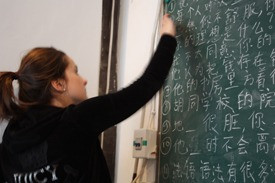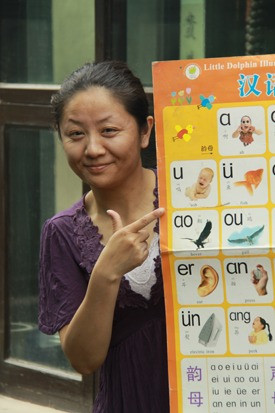How Old Is Chinese As A Written Language?
The oldest Chinese inscriptions date back to the Shang Dynasty (1766-1122 BC) and were carved on animals bones and tortoise shells. These ‘oracle shells’ were found in Anyang (Henan province) and were used to make predictions. In Chinese, this script is called “Jiǎgǔwén” 甲骨文。
 How Many Chinese Characters Are There?
How Many Chinese Characters Are There?
In total, throughout Chinese history, more than 80,000 characters have been identified, of which about 11,000 are still used in Modern Chinese. However, only about 3,500 are commonly used. In fact, with only 1,500 characters, you could read 94.6% of written material. Knowing 3,000 characters allows you to read no less than 99.5% of all texts and is thus definitely enough to read.
What Are The Main Difficulties For Westerners Learning Chinese?
For Westerners studying Chinese, there are three main challenges:
• The Chinese characters
• Pronunciation of the 4 tones
• Chinese vocabulary, which has no link whatsoever with Western languages
However, once you start to learn Chinese, you will discover the radical-phonetic system of the characters, making it easier to memorize them. The pronunciation of the 4 tones will come naturally as long as you pay attention to it, listen to Chinese people speaking and train yourself. As for the Chinese vocabulary, it’s very important to speak as much as possible. When using the same words every day and associating them with concrete objects or situations, you will make sure that those ‘strange’ sounds gradually become very familiar to you.
 What Elements Of The Chinese Language Are Comparatively ‘Easy’ To Learn?
What Elements Of The Chinese Language Are Comparatively ‘Easy’ To Learn?
Compared to Western languages, the structure of the Chinese language has a very strong internal logic and very few exceptions to certain rules, compared to English, French, German or Spanish.
• Verbs : no conjugations and no tenses, only some particles used after verbs
• Nouns : no articles, no declinations, no gender, no cases, no plural
• Sentence structure : fixed word-order in both affirmative sentences and questions, no inversion
How Many People Speak Mandarin Chinese As Their First Language? Where Is Mandarin Chinese Spoken?
Unfortunately, it’s impossible to put an exact figure on this. According to some estimates, about 70% of all Chinese speak Mandarin, the official standard language. With a population of 1.3 billion people, this would mean about 900 million people, spread all over the country speak Mandarin. The official standard language ‘Putonghua’ is being promoted by the government and in the future it is expected that all Chinese will at least understand Mandarin, even though they will still speak their own ‘regionalect’, such as Cantonese, Hakka, Minnanhua, etc…
Outside China, there are many countries with considerable Chinese minorities who speak Mandarin Chinese or other Chinese regionalects. Not only are there many Chinese minorities in South-East Asian countries like Indonesia, the Philippines, Vietnam, Thailand, Singapore, etc., but also countries such as he USA, Russia, and the United Kingdom have many overseas Chinese who are speaking Mandarin.
Since When Have Simplified Characters Been Used?
The first series of simplified characters (jiantizi) was introduced in 1956 by the government of the People’s Republic of China in an effort to promote literacy. This was followed by a second series of simplified characters in 1964. In total, 2235 characters were simplified.
The simplified characters are officially used in the People’s Republic of China, except for Hong Kong, Macao and Taiwan, where the ‘traditional’ characters (fantizi) are still used.


